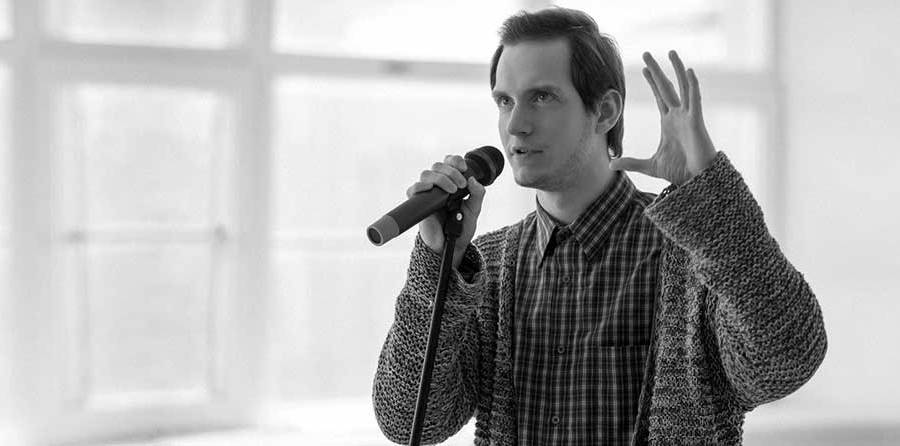The Value of Expression

One at a time, my participants told their stories in front of the group, and in a language I do not know. Yet, I followed the stories almost perfectly.
“Hope, you’re lying to us,” Cecilia pointed at me. Veronica nodded her head in agreement. “You obviously know Spanish!”
Let’s rewind a bit.
I’m on day two of a two-day “Leading with Presence” program with participants who work at a bank in Mexico City. Because Spanish is the language in which they conduct business, I have the participants tell their stories in Spanish. These stories are personal stories—profound, even humorous moments of learning and emotional insight from their individual lives.
And I don’t understand a word of it.
Let’s be clear: the only Spanish I know is the kind where you walk into a restaurant and order agua and maybe a strong drink that starts with an M and rhymes with “señorita.”
So no, I don’t speak Spanish. But somehow, my participants are convinced that I can understand them. Why? Because despite the differences between Spanish and English, all of us speak a universal, time-tested language: expression.
Expressive Techniques as Part of Presence
While storytelling relies on strong Reaching Out and Self-Knowing (the R and S of The Ariel Group’s own PRES model), it also relies heavily on the E—Expressive skills.
You’d think that this situation would be terrifying. Mortifying, even.
But, it was actually exciting.
If you think about the captivating presenters you’ve seen, you’ll probably recognize these same expressive techniques.
There’s even research to back up the anecdotal power of expressive techniques. According to research conducted by UCLA professor Albert Mehrabian, in some cases what resonates with audiences isn’t what we say; it’s how we say it. His work is often oversimplified, but his research does provide the following insight:
- 7% of message pertaining to feelings and attitudes is in the words that are spoken.
- 38% of message pertaining to feelings and attitudes is paralinguistic (the way that the words are said).
- 55% of message pertaining to feelings and attitudes is in facial expression.
My experience in Mexico City illustrates at least some of Mehrabian’s findings. One at a time, my participants told their stories in front of the group, and in a language I do not know. Yet, I followed the stories almost perfectly.
I was able to follow the emotional arc of the story and the basic plot points through the expressive techniques they used. So well, in fact, that I was able to coach them on their deliveries.
“Now, Luis, this story is about a young chef you used to mentor, correct? I want you to add a longer pause and more eye contact right after he unrolls his knives. Let’s see how that impacts the audience.”
Luis looked confused. “How did you know that’s what my story was about?”
“Because I followed the story through the expressive tools you used. You pantomimed putting on an apron, you acted out unrolling the knives and dicing onions, you spoke softly to indicate that you were concerned about this young chef, and so on.”
“But the words…” Luis protested.
“To an extent, the words are irrelevant if you’re being expressive enough.”
It was one of those moments.
The kind of moment where I just taught more with a single action
than I could have with hours of words.
Since the dawn of civilization, people have used expression to communicate when they have no other shared language. In a more current context, think about your favorite TV shows or scenes in movies. Can you tell if a character is upset, nervous, scared, excited, even if the volume is muted? That’s the power of expression – and it’s as relevant today as when the first explorers reached the shores of distant lands.
The takeaway? Even without shared language,
communication isn’t only possible, but can be enlightening, as well.
Expressiveness can improve engagement and help overcome communications obstacles. It can add life to your stories. And it lends an air of authenticity and humanity to your presentations. So now that you see the value of expressiveness, you’re probably wondering – what techniques can you start using now to incorporate it?
- Eye contact: Focus on sharing a complete sentence or thought— with just one person —while giving a presentation. This will help create mini-connections between you and members of your audience.
- Change the tone: A change in pitch, attitude, or strength, such as really expressing your frustration or your excitement, will help the audience stay engaged.
- Speed: If you are at a point in your presentation where everything stops….it just goes quiet…rambling through that won’t make the moment as palpable. Experiment with speeding up and slowing down — and even taking pauses — during your presentations.
- Incorporate facial expressions and deliberate body movements: If you ever watched an actor “smell something odd,” his face is telling the story more than the words. In the same way, if a person is talking about hitting a homerun, getting into the “stance” of the baseball player and taking a swing will help bring the story to life.
What expressive techniques do you use? Have you been able to understand someone who speaks another language because you relied on their expressive skills? Let us know in the comments, and let’s keep the communication going.
